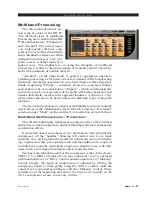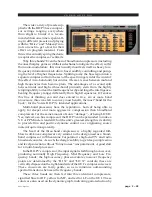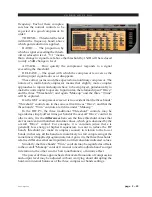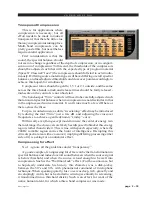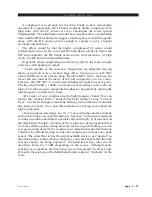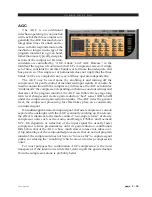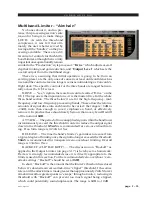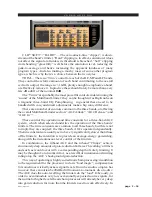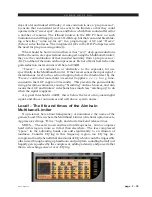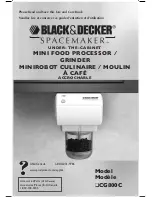
V O R S I S H D P 3 G U I
page 2 – 21
HD P3 / Aug 2006
Output Limiter
Understanding the output limiter is also key to grasping the Multiband
Limiter’s operation, detailed later.
The HD P3’s output limiter is designed to strictly control the unit’s
maximum output level such that overdrive or clipping the input of a
downstream device is prevented. Typical concerns are the introduction of
distortion products in perceptual encoding systems (resulting in unneces-
sarily high processing/bandwidth, inefficient encoding, and “funny noises”),
FM sender over-deviation (naughty), and AM sender over-modulation
(calamitous). A set of recommended parameters to achieve this perfor-
mance are given; in addition, though, the limiter may be used with more
relaxed settings for dynamic control not requiring these stringent con-
straints.
There are a number of controls on the HD P3’s output limiter which are
unusual or seemingly unconventional. But first, the easy ones:
THRESH—The signal level which output level is desired not to
exceed.
ATTACK—The period of time an applied signal must instantaneously
exceed the Threshold in order to reduce the output signal down to the
threshold. 0.5mS is recommended for zero-overshoot limiting.
RELEASE—The time the limiter’s gain takes to recover from a typical
degree of limiting once the signal no longer exceeds the threshold. 50mS
is recommended for transparent zero-overshoot limiting.
GAIN—This is used to adjust the output level of the limiter; a typical
use is if it is required to have the limiter “brick wall” at an effective
threshold of +20dB (which equates to 0dB full-scale digital). The limiter’s
threshold would be set at say +8dB (allowing 12dB “headroom” for the
limiter to operate without constriction), and then +12dB of gain to be
added using the “Gain” control.
CLIP ENABLE—When enabled a zero-attack-time limiter at the set
threshold level is activated, beyond which no overshoot is then possible.
It is used to contain transients shorter than the limiter’s attack-time and
other such anomalies that escape the limiter. Used as such, it is sonically
invisible.
Warning: “Clip” is intended to be used in conjunction with the limiter;
serious distortion can result otherwise. Alone it can be anything other than
sonically invisible.





















